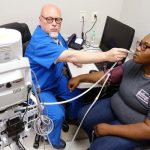The safety of the supply chain for pharmaceuticals in the United States must be built with solid links. That hasn’t always been the case, which is why the Drug Quality and Security Act (DQSA) was signed into law in 2013. Part of that law (Title II) mandates the development of a national “track-and-trace” electronic system that documents a drug’s distribution path from the manufacturing plant to the pharmacy counter. It facilitates detection and removal of potentially dangerous drugs from the drug supply chain. This system, which will be fully implemented in the next few years, will extend to drugs manufactured outside in the U.S. in FDA-registered facilities.
Florida recently joined Colorado, Maine, and Vermont as states that have passed laws to create state-administered programs for wholesale prescription drug importation; other states are considering the same thing. Because FDA law requires that any importation program must be approved by the secretary of Health and Human Services, the Trump administration has directed HHS to work with Florida to create a program that HHS can approve.
These state-administered programs are not, and cannot be, importation by many commercial entities or individual “open-border importation.” The FDA cannot assure consumer safety in systems like that, and it will never be sufficiently funded to oversee such systems. The state systems will have to be closed systems where the state oversees the safety of the imports and controls the profits of the distribution systems so consumers see the savings (consumer savings is a requirement of federal FDA law).
Some commentators have warned that these state drug importation programs conflict with the federal track-and-trace law. They don’t. In fact, the intent of these state laws and future programs is to build on the safety requirements of the federal supply chain. I developed the wholesale importation model law for the National Academy for State Health Policy that states are using. That model law lays out the processes that will be needed to comply with federal law and to create a safe, cost-saving, closed, system of importation through state administration of the program.
Want to publish your own articles on DistilINFO Publications?
Send us an email, we will get in touch with you.
Almost half of the drugs Americans consume now come from overseas FDA-registered manufacturing plants, so it is fair to say that the supply chain of U.S. prescription drugs is entirely global — and compliant with U.S. laws, including track and trace. Given this environment, any state that establishes a state-administered wholesale drug import program will leverage those existing and compliant international supply chains.
Drugs for the Canadian market are manufactured in the same plants in Europe, Japan, or elsewhere that supply U.S. drugs. Those facilities must be track-and-trace compliant because they are part of the U.S. supply chain, even though they are not physically in the U.S. Without putting too fine a point on it, it is hard to conceive that the HHS secretary would ever approve a state-administered wholesale drug importation program without such compliance with federal law.
A state, or its licensed, contracted importer or wholesaler, will likely have to get its own distinct “labeler code,” which is the first five digits of the National Drug Code. The code is the U.S. system of unique identifiers for every drug, an essential component of the track-and-trace system. Once the HHS secretary approves a state program and the imports are re-labeled to be FDA compliant, the drugs are then FDA approved.
Of course, the pharmaceutical industry is utterly threatened by the prospect that prices in the U.S. will have to be competitive with global pricing. The industry’s anxiety about creating a process to assure that drugs are affordable in the U.S. should not be equated with threats to life and safety. In fact, just the opposite is true. As I wrote in a recent white paper, creating a market for pharmaceuticals with competitive prices that actually makes drugs affordable for patients and consumers at the pharmacy counter protects life and safety. The threat to health and safety is when people cannot afford the medications they need, as we see so clearly with news about deaths from the high cost of insulin. The threat does not come from closed systems of importation for expensive brand drugs from countries that have the same manufacturing standards we have.
Date: 24 July, 2019
Source : Stat News







